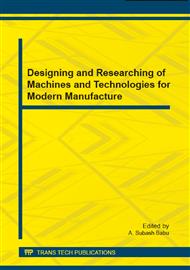p.364
p.370
p.374
p.380
p.384
p.390
p.394
p.399
p.403
Effects of Purple Sweet Potato Extract Addition in Ascorbic Acid Inhibitor to Corrosion Rate of API 5L Steel in 3.5%NaCl Environment
Abstract:
Using vitamin C or ascorbic acid as corrosion inhibitor has several weakness. In its liquid form ascorbic acid is easily oxidized and its anti oxidant properties unstable due to heat, light, oxidizer, dissolved oxygen and heavy metals. Purple sweet potato (ipomoea batatas L) with its high anthocyanin is one of alternative for green corrosion inhibitor. Extract of purple sweet potato has the ability to hold the enzyme reaction and oxidation proses of ascorbic acid. Purple sweet potato extract mixed with ascorbid acid is used as inhibitor of API 5L steel in 3.5%NaCl. This compound is classifid as mixed type inhibitor. The adding of purple sweet potato extract will assist ascorbic acid to maintance its inhibition efficiency and increases surface layer corrosion resistant of steel. Polarization methods and electrocehmical impedance spectroscopy (EIS) are used to investigate corrosion rate and mechanism of the steel. Appliaction of 4 ml purple sweet potato mixed with 10-4M ascorbic acid inhibitor increases inhibition ability of API 5L steel from 23.5 to 57.52%. Purple sweet potato extract moves polarization curve to lower potential (below 82 mVolt) with tends to be more negative.
Info:
Periodical:
Pages:
384-389
Citation:
Online since:
December 2014
Price:
Сopyright:
© 2015 Trans Tech Publications Ltd. All Rights Reserved
Share:
Citation:


